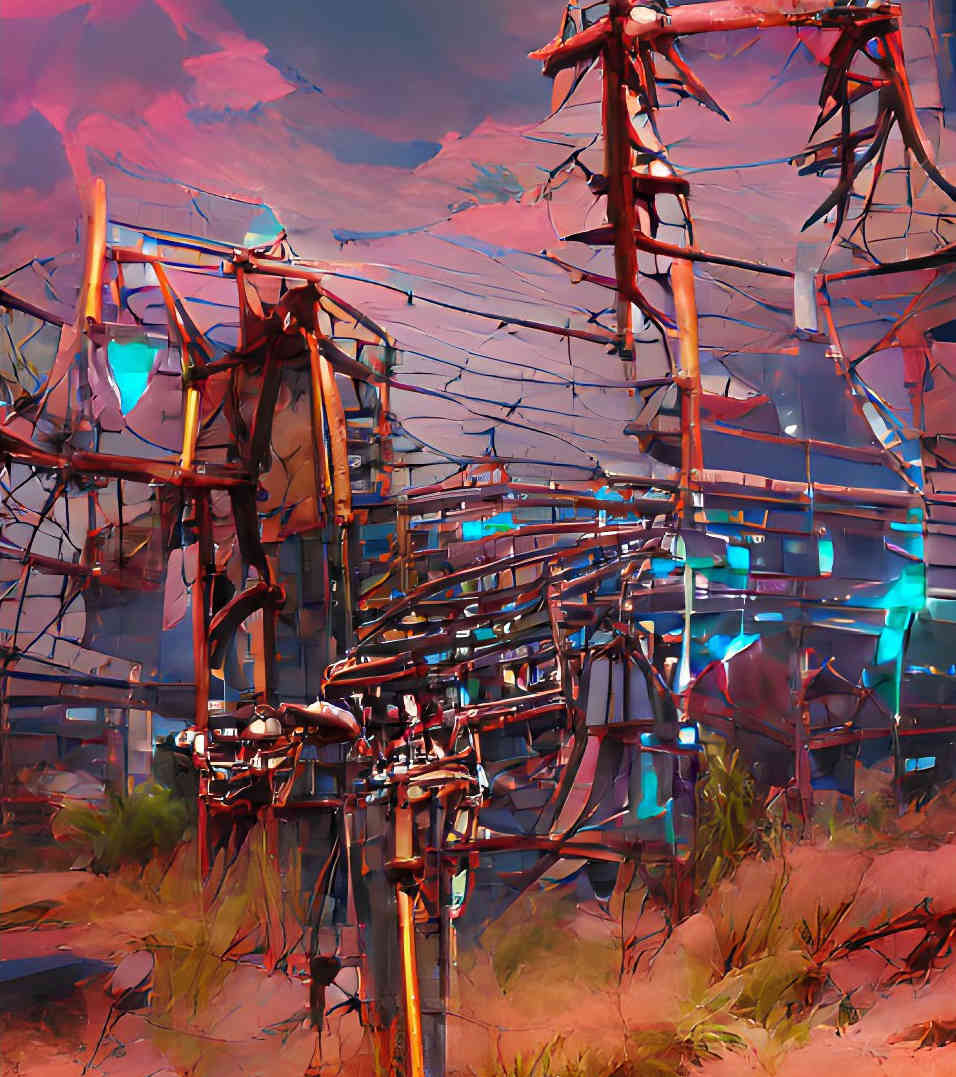
"The bringing into cultivation of waste-lands" - Marx
The wind screams to nothing as absence rests heavily atop a rocky plain. No one dares venture here, not because of anything in particular, but of what it lacks. What landscape is more indicative of the end times than the wasteland? Lighting screens of a dark tomorrow, wastelands paint a bleak backdrop to films depicting harsh environments or the aftermath of a terrible disaster. The deserts of Tatooine or the visions of McCarthy's The Road seem to contrast our inhabited and shining pathways from city to city or suburb to exurb. Yet, the wasteland is here and it is in New Jersey.
First, continuing our speculative project of the apocalypse, the end of days was yesterday and rather unceremonious. With this in mind, the wastelands of this brave, dead world are equally banal. On the route out of New York City, if one dares cross the GWB or tunnels beneath the Hudson, they are met by a nightscape of parkways and turnpikes, tolls and taillights, all illuminated by the light pollution of near cities and industrial parks. Our wasteland is concrete and asphalt, a mix of rusted and new metal, wires, and lights. Twilight and headlights illuminate silhouettes of old bridges and empty factories.
This is far from barren. Instead of being the absence of civilization, it is a necessary byproduct and requirement. Landfills and logistics together, the two components meant to be invisible become the universal backdrop for everything. While New Jersey may offer the key example, this wasteland is everywhere with a few pockets of cities, housing developments, and wilderness. Now, how do we understand this bright wasteland?
Simply looking around at the rusted bridges and fourteen-wheelers is confirmation enough that the wasteland was produced and is constantly being made and remade. This process, even though it may at first feel as much, is not an entirely autonomous event, happening without our knowledge and activity; rather, it is through our everyday actions and the products of our activity that contribute to the wasteland. The corollary to this is that the wasteland is also a contributing factor to the production of ourselves. We make the wasteland and the wasteland makes us.
While in movies, the leather-laden and begoggled motorcyclists appear quite situated in their environment, how are we, coffee-stained and donning a singular air-pod in our Sedans situated in our wasteland? Mark Fisher's "capitalist realism," that it is easier to imagine the end of the world instead of any alternative, and Zizek's claim that we are all Fukuyamaists, that we all tacitly believe that we are at the end of history despite our conscious beliefs otherwise, both capture the real character of this wasteland: the fact that it can never be recognized as such. To do so is to finally address the concrete reality of the wasteland, of the ruins of what was before, and the possibility of what can come after.
This is precisely the radical freedom prompted by science fiction fantasies of "terraforming." Here, humans find an inhospitable planet and then seek to create a suitable ecosystem and habitat for human life. Is the proper post-apocalyptic response not one of terraforming, of accepting our wasteland as a wasteland and opening it up to our own will? The only issue with such fantasies is that they are always plagued by what the terraformers brought with them, such as their politics, petty disputes, and antiquated social systems. Is the problem then that, at least in these fantasies, the wasteland and its preceding apocalypse wasn't quite so catastrophic? To be more precise, it was not let go, what was not "laid to waste" that is the issue, not the inhospitable wasteland itself.
Yet, one has to be careful here. This point can easily be overemphasized into a glee of destruction (i.e., Benjamin's The Destructive Character, or Nietzsche's "putting one's shoulder to the plow). While there is some truth to this position, the path forward lies not only in the act of lying to waste, but, according to Marx, is "the bringing into cultivation of waste-lands." It is here precisely that the "laying to waste" is the antiquated apocalypse itself, the fact that the catastrophe was an element of yesterday despite its capacity to lay the grounds for tomorrow.
This point can best be made by Nicholas Hoult's Nux in Mad Max Fury Road (2015). In the film, Nux is a tumor-ridden and therefore doomed War Boy who comes to doubt his religious fealty to Immortal Joe and eventually sacrifices himself for the survival of a new society where water is freely given to all inhabitants of the Citadel. However, it is important to note that Nux, upon his sacrifice, screams his famous "witness me!" that all War Boys scream when death is imminent. Rather than having given up his faith and simply destroying the social structure his faith was integral to, Nux's sacrifice is his final proclamation of his faith and the preceding society, its own death blow to itself. In this view, the (de)constructive force behind the wastelands is society's own death blow to itself, one that should not be hindered, but aided for the freedom that follows from the ensuing terraforming and building of something new.
#nature #rural #urban